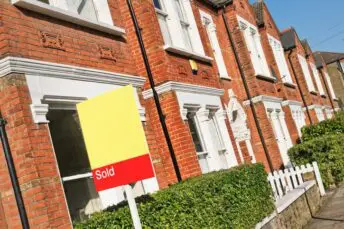House Price Watch Jan 2022
Strong buyer demand and fewer homes for sale sustain the sellers' market and rising house prices. Activity returns to more usual levels. We expect a closer balance between demand and supply in the months ahead. Seller valuations are up with homes for sale likely to follow. And, with house price growth over the past year outstripping earnings growth by a wide margin, housing affordability will inevitably be stretched.
What’s happening nationally
House prices are up on average +0.6% in the past month and +10.6% in the past year.
Indices based on:
Land Registry – registered property transactions in December
Nationwide & Halifax – mortgage valuations in January.
Rightmove – asking prices posted on Rightmove in January.
*Rightmove is not included in the index average as the basis for its index is different (asking price vs agreed sale price)
| Index reports: | Monthly change | Annual change |
|---|---|---|
| Land registry | +0.8% | +10.8% |
| Nationwide | +0.8% | +11.2% |
| Halifax | +0.3% | +9.7% |
| Rightmove | +0.3% | +7.6% |
| Average change | +0.6% | +10.6% |
House prices in your area
House prices have increased in most UK regions over the past month. Scotland (-1.8%) and the North East (-1.5%) are the exception.
Most areas of the UK have seen a rise in annual house price growth of more than 10% over the past year. The exceptions are the North East (+5.9%) and London (+5.5%).
Average house prices are highest in London and lowest in the North East.
| UK Region | Average price £ | Monthly change | Annual change |
|---|---|---|---|
| England | |||
| Nothern Ireland | |||
| Scotland | |||
| Wales | |||
| North West | |||
| Yorkshire and The Humber | |||
| North East | |||
| West Midlands | |||
| East Midlands | |||
| South West | |||
| East of England | |||
| South East | |||
| London |
| UK City | Average price | Annual change |
|---|---|---|
Market Monitor
January transactions were up 5% on December but down 11% on January last year. However, by historical standards, transaction levels are higher than normal for this time of year (higher than they were in January 2020 or January 2019).
It continues to be a seller’s market with average stock levels at their lowest level in 12 months.
Time to sell has increased in January but still below the 12 month average.
How busy is the market?
- Not busy
- Normal
- Very busy
- Transactions lower than last January but higher than 2020 and 2019 levels
- Total transactions in January 107K
- +5% from last month
- -11% lower than January last year
Homes for sale vs homebuyers
- Good availability of homes
- Normal
- Shortage of homes
- Buyer enquiries up (+16% RICS); buyer demand continues to rise
- Seller enquiries down (-8% RICS); but market appraisals up +3%
- Average stock per agent 40; stock falls again (incl under offer/ Sold STC Rightmove)
Average speed of sale
- Fast
- Normal
- Slow
- 44 days to find a buyer up from 39 days last month (12 month average 42 days Rightmove)
What the experts say
Rightmove

“Strong demand and continuing low numbers of homes for sale set the housing market frenzy to continue into the start of 2022. The number of buyer enquiries is 15% higher than the same time last year. Homes available for sale per estate agent branch drops to a low of 12. As a result, competition among buyers is almost double what it was at this time last year. There are early signs that more property choice is on its way with the home valuation requests early in January up 44% on last year and up 48% on 2020. All the signs suggest prices are likely to continue to rise until more choice is available for buyers.”
Nationwide

“January 2022 is the strongest start to the year for 17 years. Demand has remained robust. Mortgage approvals run slightly above pre pandemic levels. While the outlook remains uncertain, it is likely the housing market will slow this year. House price growth has outstripped earnings growth by a wide margin, as such, housing affordability is less favourable. A 10% deposit on a typical first-time buyer home is now equivalent to 56% of total gross annual earnings, a record high. A typical mortgage payment as a share of take-home pay is now above the long run average despite mortgage rates remaining close to all-time lows.”
Halifax

“Following peak activity in 2021, transaction volumes are returning to more normal levels. Affordability is historically low as house price rises outstrip earnings growth. Despite record levels of first-time buyers stepping onto the ladder last year, younger generations face significant barriers to home ownership as deposit requirements remain challenging. This is expected to become more acute as household budgets face greater pressure from an increase in the cost of living, and interest rate rises feed through to mortgage rates. While limited supply of new housing stock will support house prices, it is likely the rate of house price growth will slow considerably over the next year.”
Zoopla

“There is still a significant imbalance between demand for homes and the supply of homes for sale which will continue to put upwards pressure on prices, offsetting some of the economic headwinds ahead. We expect home values to rise by an average of 3% this year, ranging from 2% in London and 4% in the North West and East Midlands. We forecast 1.2 million transactions, down from 1.5 million last year, but in line with the average number of transactions over the last five years.”
RICS

“New buyer enquiries gain momentum at the start of the year. Stock remains tight, continuing to underpin house price growth across the country. However, market appraisals increased for the first time since June 2021.”





